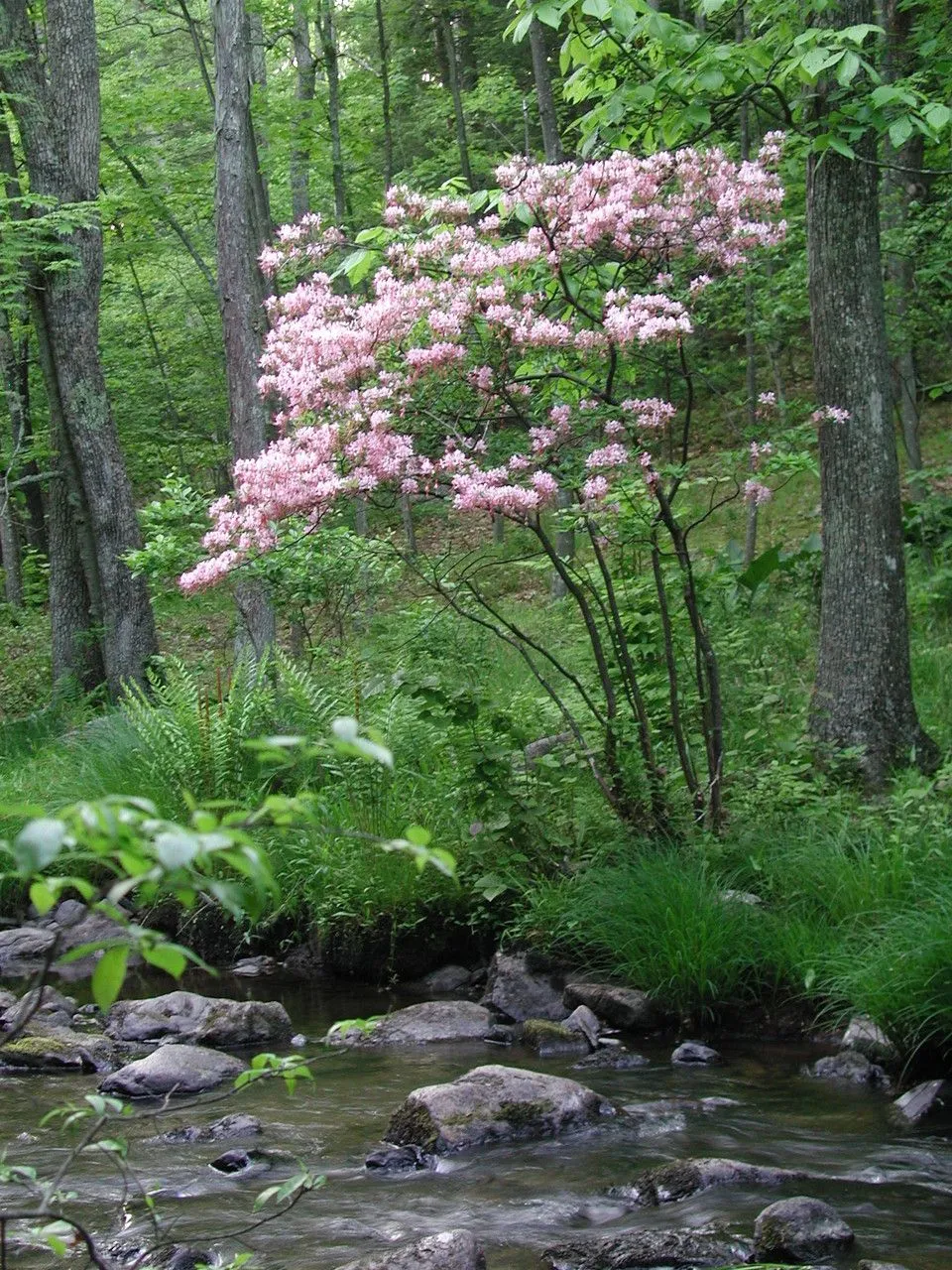
Author: (Michx.) Shinners
Bibliography: Castanea 27: 95 (1962)
Year: 1962
Status: accepted
Rank: species
Genus: Rhododendron
Vegetable: False
Observations: Illinois to E. U.S.A.
Election-pink, scientifically known as Rhododendron periclymenoides, is an enchanting member of the Ericaceae family. This flowering plant, described by (Michx.) Shinners, was officially documented in the scientific literature “Castanea” in 1962.
Native to the regions stretching from Illinois to the Eastern United States, Election-pink is acclaimed for its vibrant and showy blossoms that adorn the woodlands and gardens where it thrives. This species typically flourishes in well-drained, acidic soils and is often found in both natural and cultivated landscapes. Its adaptability to various environmental conditions highlights its resilience and ease of cultivation.
The delightful blooms of Election-pink range in color from soft pinks to deeper magentas, contributing to its popularity among gardeners and naturalists alike. The plant’s significant horticultural and ecological value makes it a cherished presence in eastern North American flora.
Election-pink holds a special place in botany and horticulture due to its aesthetic appeal and the crucial role it plays in supporting local ecosystems. Its flowers provide nectar to a variety of pollinators, including bees, butterflies, and other insects, thereby contributing to the biodiversity and health of its native habitats. The foliage also serves as a food source for various herbivorous species.
Overall, Rhododendron periclymenoides is a remarkable plant that not only enhances the visual beauty of its surroundings but also supports the intricate web of life in the regions it inhabits. Its study and cultivation continue to be of great interest to botanists, horticulturists, and plant enthusiasts.
For further detailed information on the botanical aspects and classification of Election-pink, you may refer to the original description documented in the publication “Castanea.”
Eng: election-pink, pink azalea, pinxter-flower, pinxterbloom azalea, pinkster flower
Swe: kaprifolazalea
En: Election-pink, Pinxter-flower, Pinxterbloom azalea, Pink azalea, Pinkster flower
Fa: آزالیای صورتی
Ru: Рододендрон голоцветковый
Sv: Kaprifolazalea
Taken Jan 9, 2013 by EOL − Kelly O’Donnell (cc-by-nc-sa)
Taken Jan 9, 2013 by EOL − Kelly O’Donnell (cc-by-nc-sa)
Taken Apr 7, 2022 by vin jow (cc-by-sa)
Taken Mar 27, 2022 by Charles Edwards (cc-by-sa)
Taken May 20, 2020 by Matthias Foellmer (cc-by-sa)
Taken May 21, 2020 by Michele McKinney (cc-by-sa)
Taken May 22, 2019 by Marissa (cc-by-sa)
Taken May 20, 2020 by Matthias Foellmer (cc-by-sa)
Taken May 24, 2020 by Serena boettcher (cc-by-sa)
Taken May 2, 2021 by tom grello (cc-by-sa)
Taken Jan 1, 1900 by EOL − WVU Herbarium (cc-by-nc-sa)
Taken Jan 1, 1900 by EOL − WVU Herbarium (cc-by-nc-sa)
Taken May 20, 2020 by Matthias Foellmer (cc-by-sa)
Taken Jan 1, 1900 by EOL − WVU Herbarium (cc-by-nc-sa)
Taken Jan 23, 2014 by EOL − Anita (cc-by-nc)
Taken Apr 21, 2019 by Matthias Dailey (cc-by-sa)
Taken Mar 15, 2021 by Heather Hoaglund-Biron (cc-by-sa)
Taken Apr 16, 2005 by EOL − Steven J. Baskauf (cc-by-nc-sa)
Taken Apr 16, 2005 by EOL − Steven J. Baskauf (cc-by-nc-sa)
Taken May 20, 2020 by Matthias Foellmer (cc-by-sa)
© copyright of the Board of Trustees of the Royal Botanic Gardens, Kew.
© copyright of the Board of Trustees of the Royal Botanic Gardens, Kew.
© copyright of the Board of Trustees of the Royal Botanic Gardens, Kew.
Growth form>: Multiple Stem
Growth habit>: Shrub
Growth rate>: Moderate
Ph maximum: 5.5
Ph minimum: 4.3
Family: Myrtaceae Author: (F.Muell.) K.D.Hill & L.A.S.Johnson Bibliography: Telopea 6: 402 (1995) Year: 1995 Status:…
Family: Rubiaceae Author: Pierre ex A.Froehner Bibliography: Notizbl. Bot. Gart. Berlin-Dahlem 1: 237 (1897) Year:…
Family: Sapindaceae Author: Koidz. Bibliography: J. Coll. Sci. Imp. Univ. Tokyo 32(1): 38 (1911) Year:…
Family: Asteraceae Author: A.Gray Bibliography: Pacif. Railr. Rep.: 107 (1857) Year: 1857 Status: accepted Rank:…
Family: Fabaceae Author: Medik. Bibliography: Vorles. Churpfälz. Phys.-Ökon. Ges. 2: 398 (1787) Year: 1787 Status:…
Family: Aspleniaceae Author: (Cav.) Alston Bibliography: Bull. Misc. Inform. Kew 1932: 309 (1932) Year: 1932…